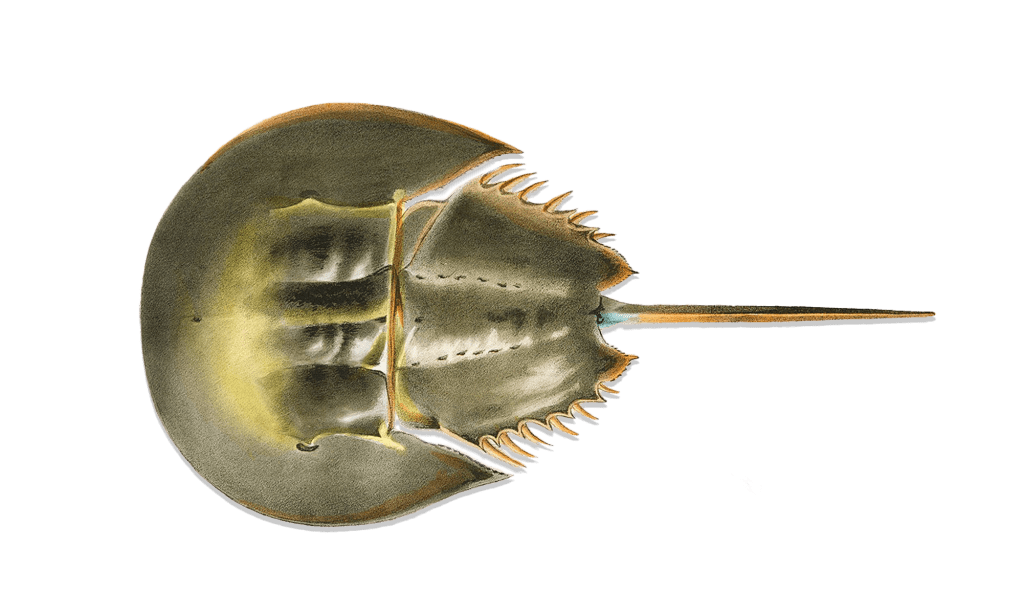
The Atlantic Horseshoe Crab
Limulus polyphemus
Learn Even More about Horseshoe Crabs with Dr Daniel Sasson!
They look like some sort of illustration in a mid-90’s kids book about prehistoric animals, which, if you’re familiar, is a really specific aesthetic that deserves some sort of a revival.
Maybe you’re familiar with the Pokemon called Kabuto. I have to admit, my wife got me a classic Gameboy Color for Christmas, exactly like the one I had when I was a kid, and I’ve put close to 20 hours into Pokemon Gold over the past 4 weeks.
Anyway, the point is that they look like, like many things from the sea, otherworldly, ancient, relics of a bygone era, even straight made up for an animated children’s television and game series that somehow manages to rely on its characters training animals to fight each other as a universe building plot point which is, I mean, problematic, right? I don’t know.
They somehow manage to simultaneously embody the moniker of horseshoe while also looking nothing alike other than a U-ish similarity, just as much as their sight immediately calls to mind a crab while not being one in the slightest. I’m talking about, of course, the horseshoe crab. That’s today’s topic. Horseshoe crabs.
the Species
There are currently 4 living species of Horseshoe Crab in the world. 3 of them are native to the Indo-Pacific and Asian regions of the world: the Mangrove Horseshoe Crab (Carcinoscorpius rotundicauda), the Indo-Pacific Horseshoe Crab (Tachypleus gigas), the Chinese Horseshoe Crab (Tachypleus tridentatus). The fourth species is found along the US Atlantic Coast, parts of the Gulf of Mexico, and the Yucatan Penninsula: the Atlantic Horseshoe Crab (Limulus polyphemus). The latter will be the focus of today’s exploration.
Horseshoe Crabs, whose earliest ancestors arose nearly 450 million years ago, live lives spanning 20 to 40 years. They are roughly 2 feet long by 1 foot wide and range between 7 and 10 pounds.
Classification
Are they crabs or not? They’re definitely not horseshoes. What even is a horseshoe crab? The short answer: no, they are not crabs. If you remember grade school biology class, you may remember Kingdom, Phylum, Class, Order, Family, Genus, Species as the hierarchical classification system for all living things. In the case of the Atlantic Horseshoe Crab, it looks a little something like this:
| Kingdom | Animalia (Animals) |
| Phylum | Arthropoda (Insects, Arachnids, Crustaceans) |
| Class | Merostomata (translation: legs that attach to mouth) |
| Order | Xiphosura |
| Family | Limulidae |
| Genus | Limulus |
| Species | polyphemus |
So, no, they are not crustaceans. They belong to their very own class, Merostomata, which essentially means “legs that attach to mouth” which is, you know, descriptive. In fact, Horseshoe Crabs are most closely related to the arachnids and now extinct trilobites.
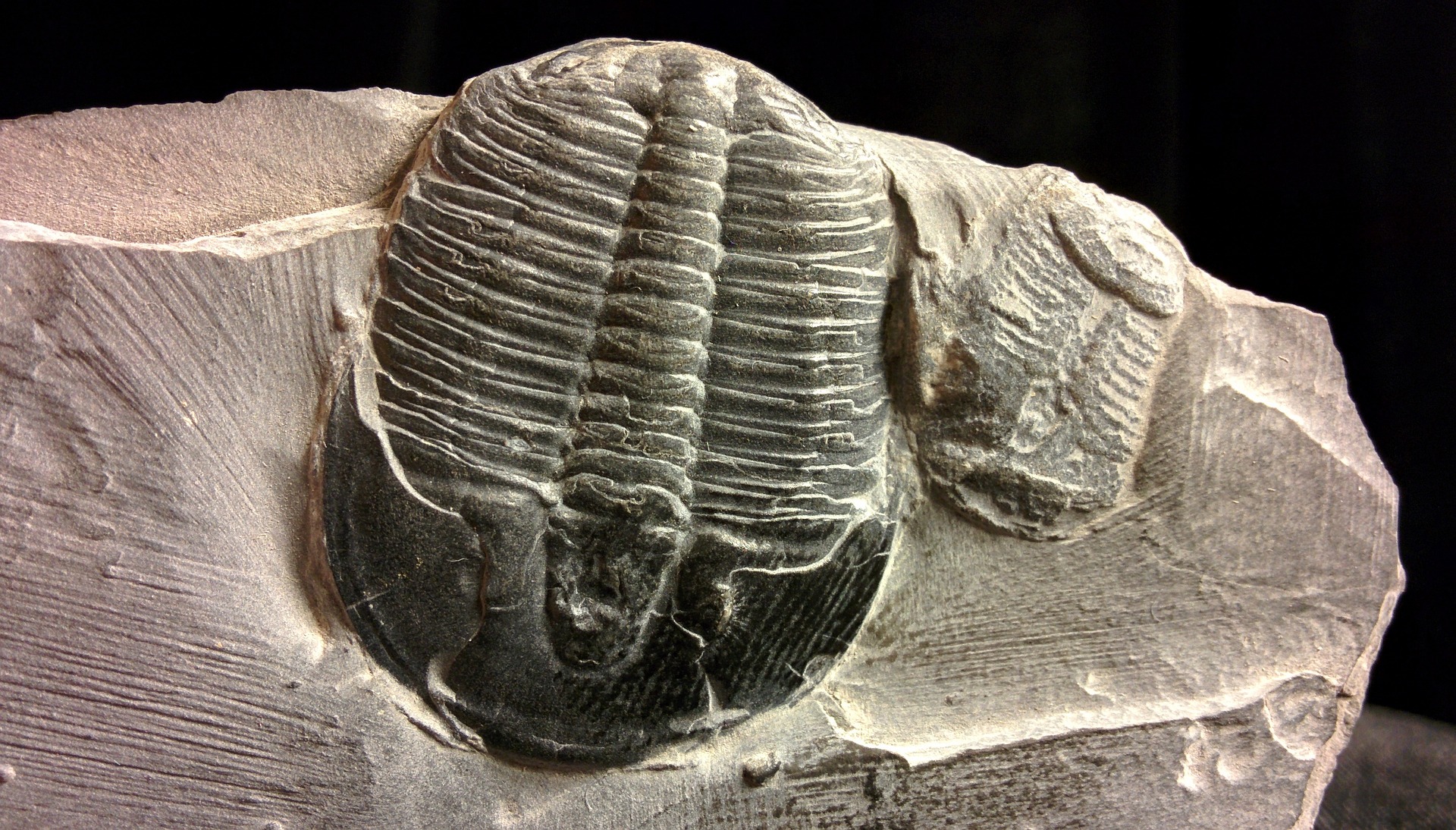
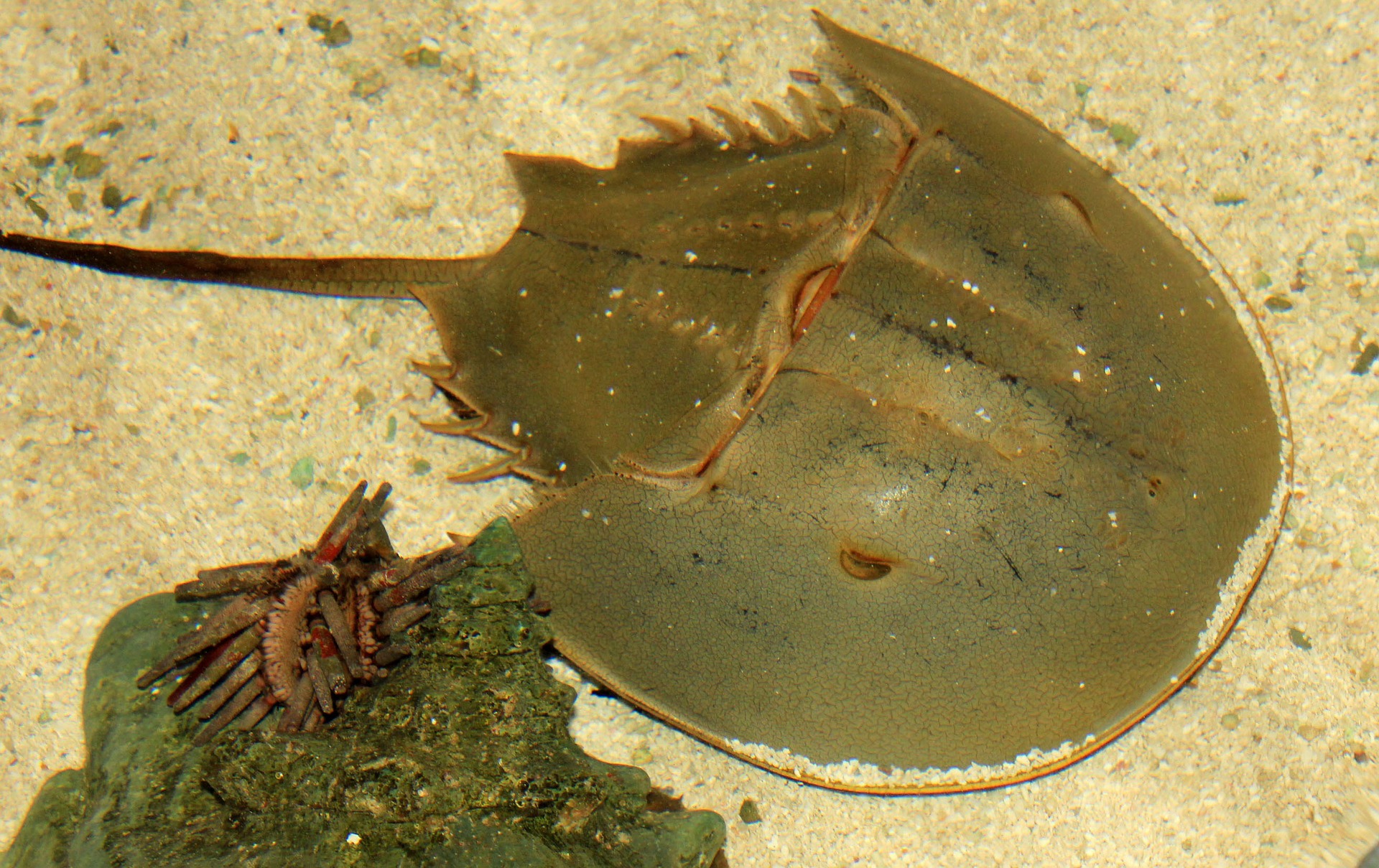
Anatomy
The Horseshoe Crab is a biological tank, its entire body being covered in a hard protective layer called the carapace. It has two compound eyes, about where you’d expect their eyes to be, but what is unseen to most is their two simple median eyes (able to detect visible and UV light), their single endoparietal eye, two rudimentary eyes on top of their head-body, another pair of eyes near the mouth, and a cluster of light detecting organs called photoreceptors on their telson, or tail.
Horseshoe crabs are loaded with eyes, but being loaded with eyes doesn’t mean you can see particularly well. Fun fact: their rods and cones are 100 times the size of ours and are the largest of any known animal.
Look beneath, and there’s much more than otherwise meets the eye. Horseshoe Crabs use a small little pair of appendages called chelicerae to grab and move food to there mouths. They have five pairs of legs, the first being called pedipalps (like in spiders!). The mouth is weird. Its located in the middle underside, practically between their legs, eating up the worms and molluscs caught by their chelicerae.
Behind its legs, the horseshoe crab has something called book gills, also just like in spiders! Like any gills or lungs, they are what allows the horseshoe crab to take in oxygen and release carbon dioxide. Unlike most (all?) lungs, they are sometimes used to help them swim!
Another common occurrence in the animal kingdom, the females are the largest. We’re talking up to 30% larger than the males. This makes sense though when you consider that females need the extra space for carrying eggs.
Remember that episode of Spongebob where Mr Krabbs has to molt? Well, again, horseshoe crabs aren’t crabs, but they do molt! As they age, their insides grow as you’d expect, but their rigid outside does not. That’s where molting comes in. Individuals might increase 30% in size in between molts!
Breeding
Breeding season for Horseshoe Crabs is timed according to lunar phases, which of course influences the tides themselves. Large groups of horseshoe crabs will gather in shallow water along the Atlantic coast. Many males will actually attach to their chosen female companion during the journey all the way until the very moment she begins laying her eggs in the sand of the beach, fertilizing them as they leave her body. Other males linger, wait, watch. They’re called the satellite males, more their weird yet opportunistic orbiting. When an opening occurs, they’ll “swoop” (I say “swoop” because they’re actually pretty slow) in to fertilize what eggs they can. Considering females lay anywhere between 60,000 and 120,000 eggs per year in batches of thousands at a time, there are plenty of eggs to go around. How may of these newly fertilized eggs will survive however is an entirely different story.
Other Fun Facts!
Horseshoe Crabs have milky, baby-blue, blood, like the Bantha Milk of the Star Wars Universe, and it’s actually super important to human health for a very peculiar reason. But that’s a story for another day!
The Wild Life is entirely listener and reader supported. Like what we do? Help us to keep doing it for as little as $1 per month at patreon.com/devonbowker

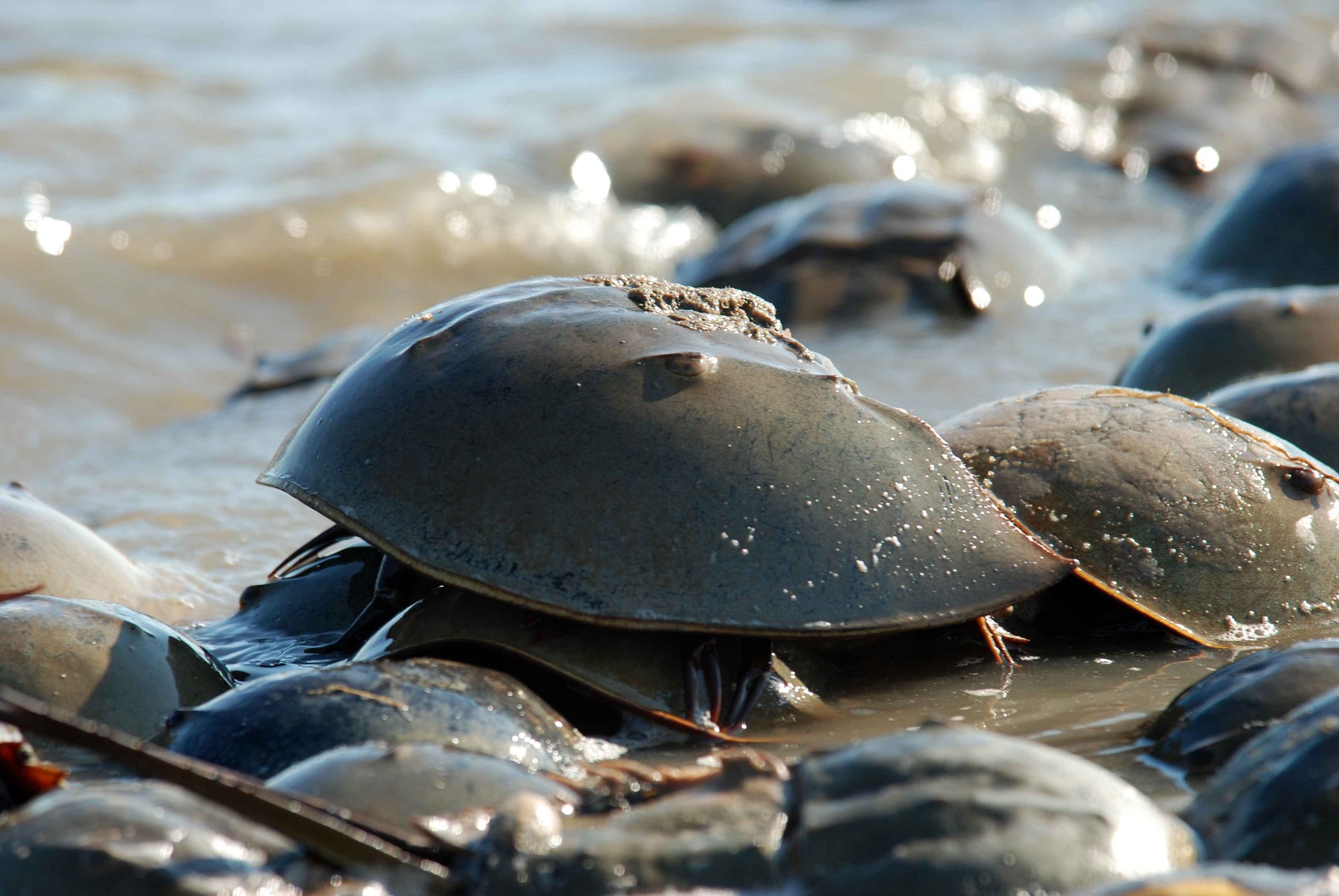
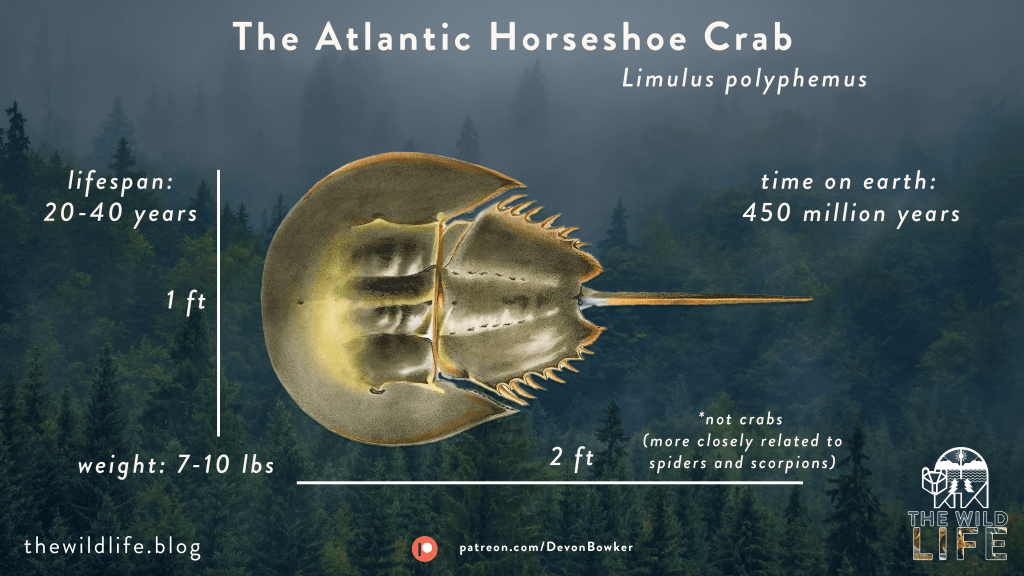
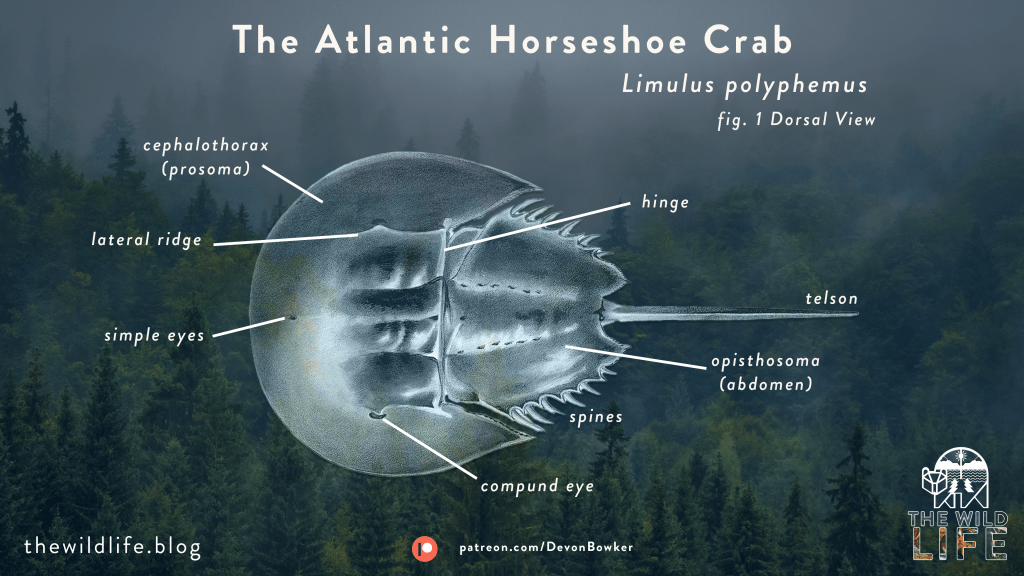
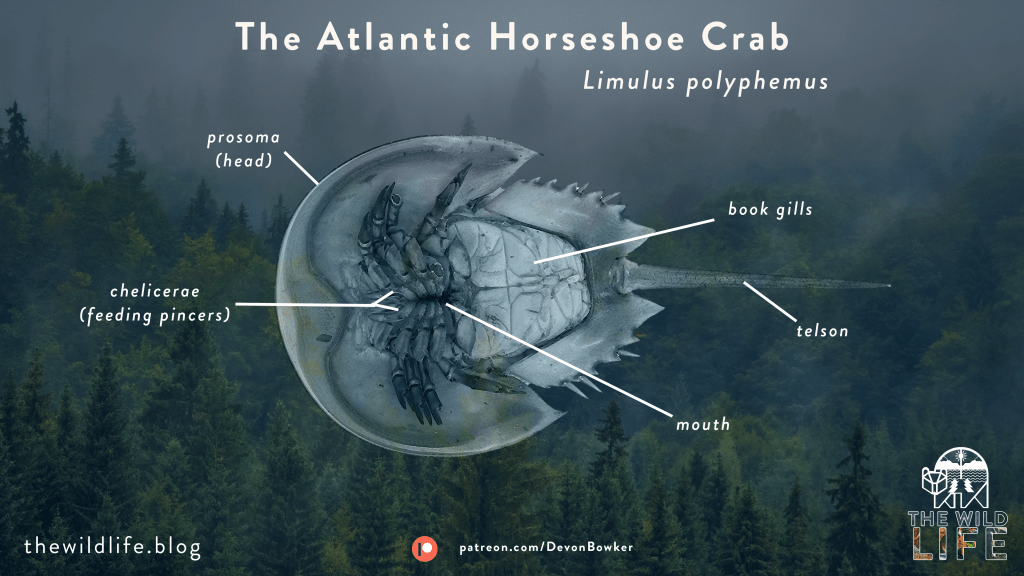
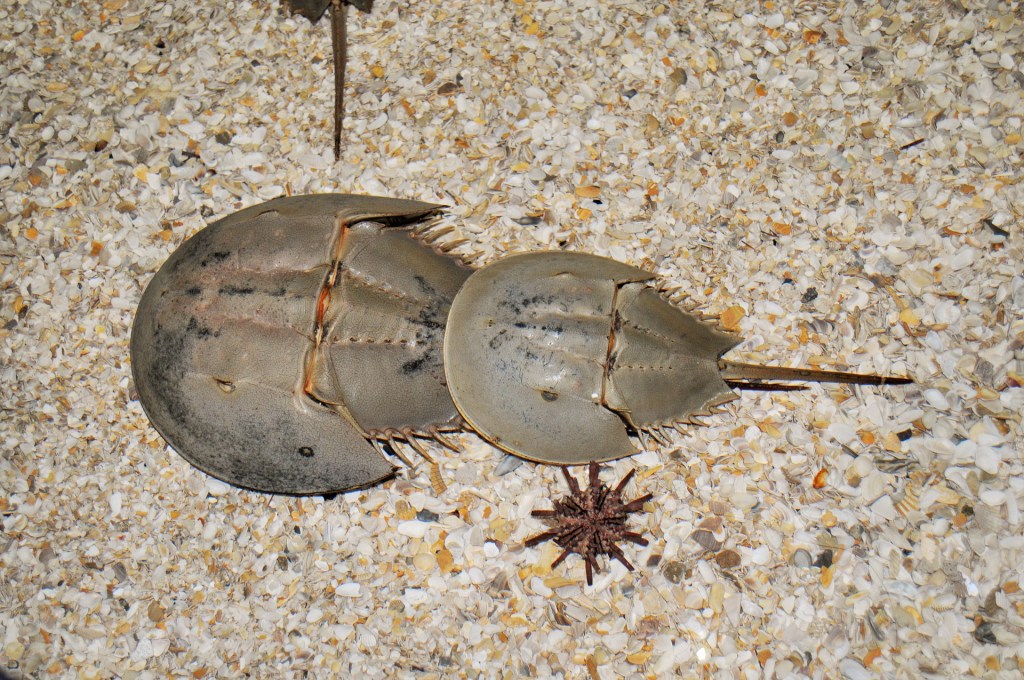
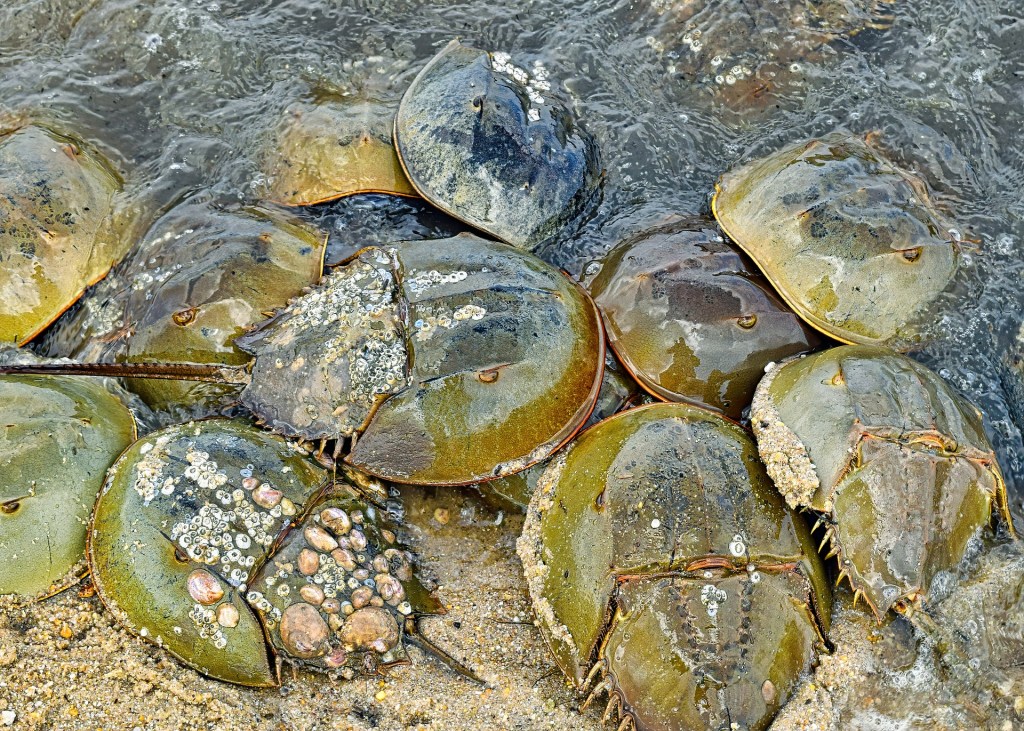

Leave a Reply